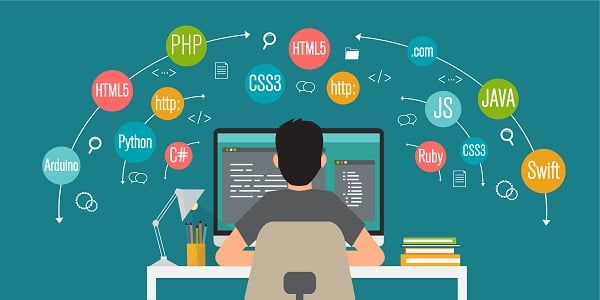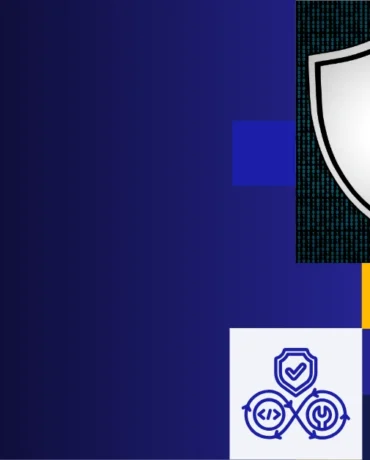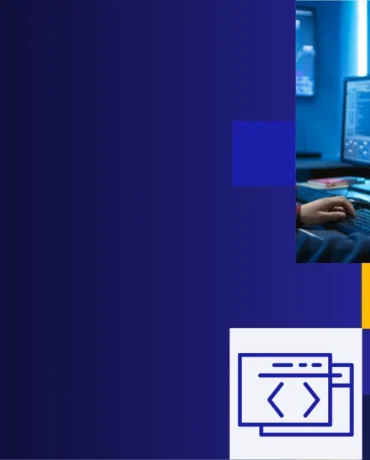Programming languages are the building blocks of software development. With the increasing demand for skilled programmers and the growing reliance on technology, the need to stay up-to-date with the latest programming languages has become more important than ever. In this article, Sunbytes will list down the top 10 programming languages for 2022, either because they are the most popular or the most useful in terms of their functionality, flexibility, and power for your dedicated developers to use.
Python
Python is a high-level, interpreted language that is easy to learn and widely used in data science, artificial intelligence development, web development, and is expected to remain one of the most widely used programming languages in 2025.
You can use Python for machine learning, website and software development, task automation, data analysis, and data visualization. Because the technology is employed in virtually every application development, from Spotify to Instagram, it is reasonable to assume that developers who master Python will be top-rated.
A high level of programming comparisons by different IT staff augmentation and dedicated team agencies has rated Python as their number 1 choice.
Hitting the 30-year mark, this practical programming language has matured better than most humans. Its technology has remained relevant in the modern sphere and shows a healthy appreciation each year. Python has a large open-sourced presence that produces its wider collaborative community.
JavaScript
JavaScript (JS) is an object-based scripting language to make websites visually attractive and well-performing. Associated with Front-End development, JS is a versatile tool used by a strong community of programmers to develop web applications.
This language has no competition when it comes to creating dynamic user functionality for your website, application, or software. Among the 97% of the world’s websites that apply JS to their frontend interfaces, it is fair to say that this technology will be in demand for years to come. Many of the most popular websites, from Facebook and Twitter to Gmail and YouTube, rely on JavaScript to create interactive web pages that display dynamic content to users.
You can use this programming language on the server side to construct network applications using Node.js. Node.js is compatible with the following operating systems: Linux, SunOS, Mac OS X, and Windows. More than that, the language has a flexible syntax, is simple to use, and is compatible with all major browsers, making it ideal for beginners.
Golang
Next in the top-notch programming language list is Golang. Golang is famous for its modern, sustainable capabilities for developing web apps and AI systems. It doesn’t match against Python or JS in terms of an uptake growth rate, but according to research by the Sunbytes team, 71% of Go developers develop microservices, the second most popular after Scala, and Gin is the most popular Go web framework. Golang has proven to be very useful for writing light-weight microservices.

Golang is an easy-to-learn, general-purpose programming language with a clean syntax, making it easy to write simple, reliable, and efficient software. Though it uses a similar syntax to C, Golang is a standout language that provides top-notch memory safety and management features. You can consider it as one of the best-paid technologies on the market, and it continues to be a popular choice for back-end programming.
With an average price tag of $110,000 for candidates with Go capabilities, it is enticing. Ensuring a profitable and in-demand skill set, the Go language is a solid choice for future AI and system developers.
Kotlin
If you wish to excel in the niche programming field of Android App development or multi-platform use, Kotlin is the programming language for you.
According to the Kotlin website, they express themselves as a modern, concise, and safe language easily compatible with JVM frameworks and libraries. For coding enthusiasts, Kotlin is an ideal language to learn as it requires 20% less code than its competitor, Java, reducing the chances of making code errors and simplifying the developers’ work.
In addition to its benefits, one of the main ideas behind Kotlin is being pragmatic, i.e., being a programming language useful for day-to-day development, which helps the users get the job done via its features and its tools.’’
Java
This language has been standing strong in the test of time in terms of popularity and simplicity of use for over 25 years. Java is one of the most powerful programming languages that you can see in more than 3 billion devices. You can use this coding language in a variety of applications, including desktop apps, mobile applications, web development, artificial intelligence, cloud applications, and many more.
Since this programming language has an English-like syntax with few special characters, it’s faster to learn this language and deploy it to construct appropriate applications. It is also part of a family of languages that are under the great influence of C++ (as well as C#), knowing it provides significant benefits when studying these other two languages.
Additionally, it has good security and can handle massive amounts of data. Thanks to these features, this is a perfect language for the online financial industry, and it is frequently used in areas like banking, billing, and the stock market.
PHP
Experts predict that PHP will continue to play a significant role in the next years as it’s one of the earliest server-side technologies that integrates with HTML to provide the functionality to a web page. PHP programmers are still in great demand due to the expanding trend of web development.
This programming language offers various characteristics that appeal to newcomers, including simplicity and ease of learning, quicker performance than other scripting languages, and strong security. PHP is highly flexible, whether during an ongoing project or after completion, and can be applied on different platforms, including UNIX and Solaris. You can integrate PHP with other technologies effortlessly, such as Java, and existing software does not require redevelopment. This is very time-effective and cost-saving for developers, especially for juniors.
SWIFT
No, it’s not Taylor Swift.
It’s a programming language that companies use to create iOS and macOS apps. Swift’s syntax is concise and easy to learn, making it an ideal choice for developing applications quickly.
Not only does iOS operate on all iPhone and iPad devices, but it also serves as the basis for additional operating systems like watchOS (for Apple watches) and tvOS (for Apple TV). Full-stack Academy reported that Apple is the technological sector leader, with iOS applications continuously being the most lucrative in the mobile market. According to Apple Developer, ‘’Swift is a powerful and intuitive programming language for iOS, iPadOS, macOS, tvOS, and watchOS. Writing Swift’s code is interactive and fun, the syntax is concise yet expressive, and Swift includes modern features developers love. Swift code is safe by design, yet also produces software that runs lightning-fast.’’
C#
C# has been on top of minds of many developers due to its popularity in building Windows desktop applications, web applications, and games. This is a modern, object-oriented programming language designed for building robust and scalable applications.
Developers can use C# for developing mobile apps using the Xamarin framework, and it is gaining popularity in the machine learning and artificial intelligence fields. Its simplicity, type safety, and interoperability with other programming languages make it an ideal choice for developing large-scale applications.
Additionally, Microsoft’s strong support for the language through the .NET framework, Visual Studio, and Azure has made it easier for developers to use C# to build scalable cloud applications. The growth of .NET Core, an open-source framework for building cross-platform applications, has also contributed to the language’s increasing popularity.
Ruby
Ruby is considered one of the top programming languages in 2025 due to its elegant syntax, which makes it easy to read and write. It is famous for web development, thanks to the popularity of Ruby on Rails, which makes it easy to build complex web applications quickly. Additionally, this language strongly emphasizes testing and code quality, which means that code written in Ruby is often of a high standard and less prone to bugs and errors.
Moreover, you can flexibly use Ruby for various tasks, from writing scripts to automating tasks to building complex web applications. Its versatility makes it a popular choice for developers who want to work on different projects without learning multiple languages.
Rust
In 2025, Rust has been a popular programming language due to its focus on safety, performance, and reliability. According to a Stack Overflow survey, Rust is the most loved programming language for developers, when 73% of users saying they want to keep working with this language on various projects. This language aims to address common programming issues such as memory safety and thread safety, which are often responsible for crashes and security vulnerabilities. Its unique ownership and borrowing system ensures that programs are free from memory-related bugs, making it a safe and secure language to use.
Rust is also known for its impressive performance, allowing it to handle resource-intensive tasks with ease. This has led to its increasing popularity in fields such as game development, high-performance computing, and networking.
Furthermore, Rust’s modern syntax and expressive features make it a flexible language, suitable for a wide range of applications. Its growing ecosystem of libraries and frameworks makes it easier to develop applications and accelerate the development process.
So, what is your to-go programming language in 2025?
Each language has its unique strengths and weaknesses, and the choice of language depends on the specific needs of a project. From established languages like Java and Python to emerging ones like Rust and Kotlin, the top 10 programming languages reflect the diversity of modern software development.
While some languages continue to maintain their dominance, others are gaining popularity due to their unique features and benefits. Ultimately, the choice of language depends on the project’s requirements, team expertise, and the desired outcomes. As the technology landscape continues to evolve, we can expect newer languages and frameworks to emerge, challenging the status quo and offering new solutions to developers worldwide.


